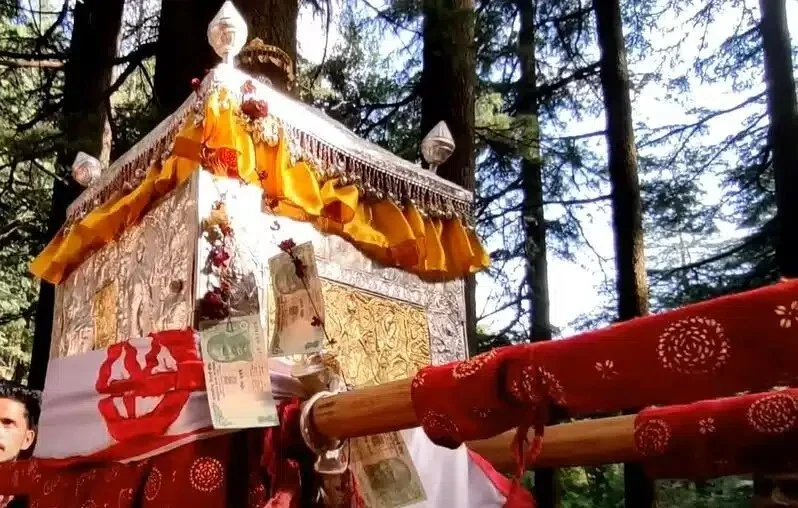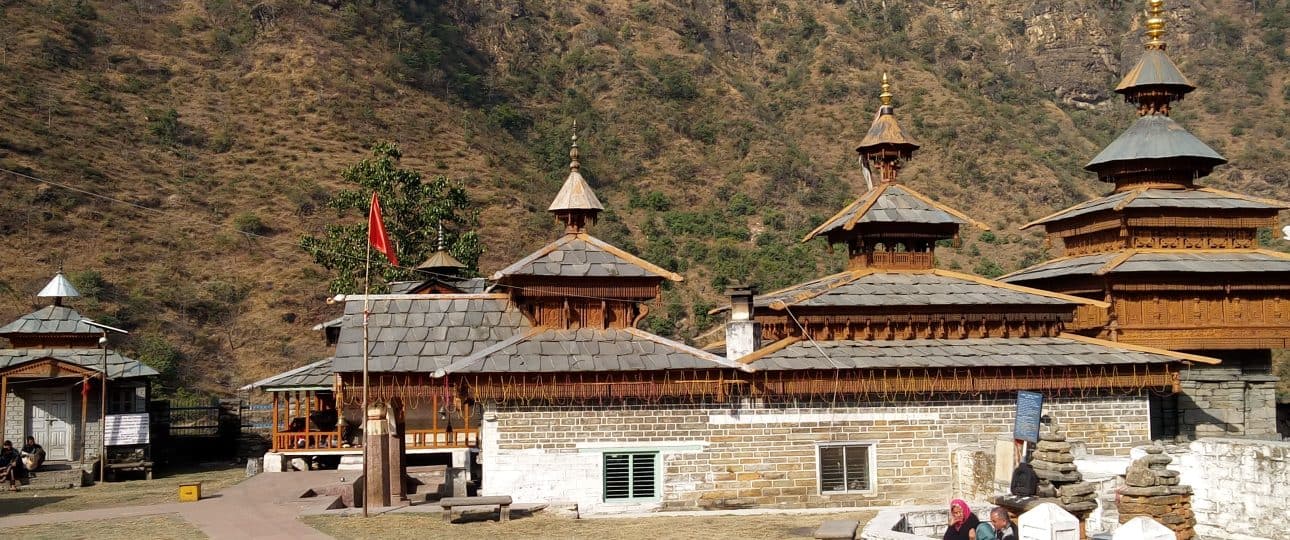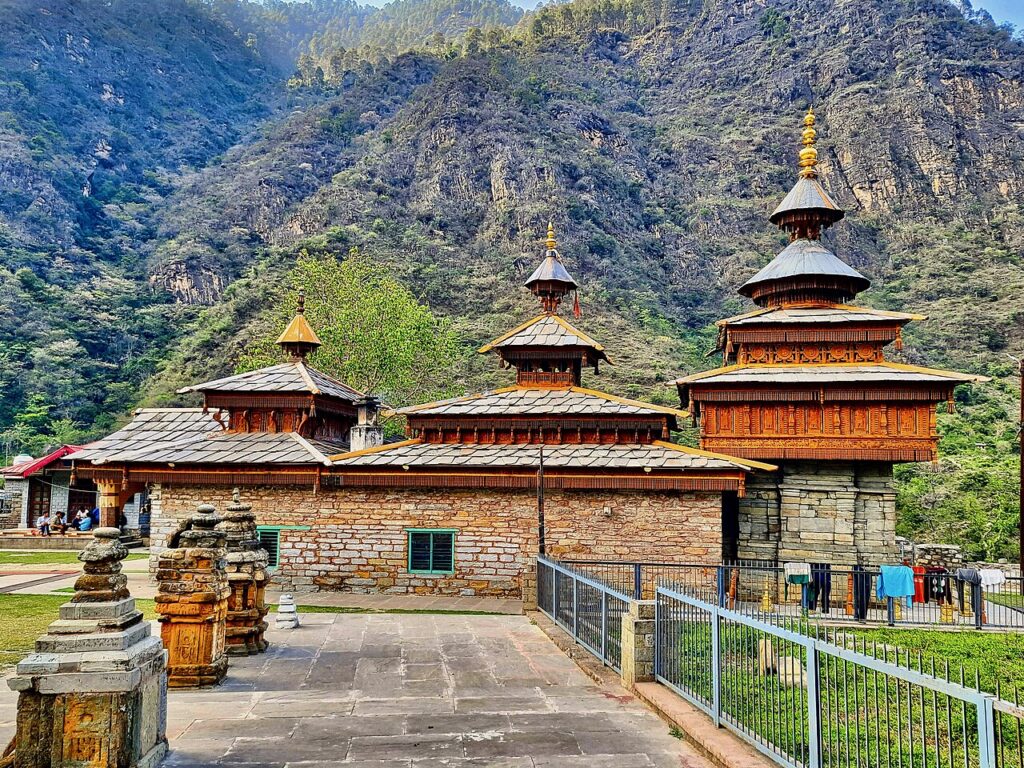Lying deep in the Western Himalayas, mainly worshipped throughout the Jaunsar-Bawar tract of Uttarakhand and stretching to regions of Himachal Pradesh, is the rich spiritual heritage of Mahasu Devta. A more than just a god, Mahasu Devta is the very essence of the mountains to many a devotee – a kindly guardian, a bringer of justice, and a divine figure closely interwoven in the lives and culture of the people. Sometimes considered an incarnation of Lord Shiva, his stories are not myths but living lore that shape the hill people’s identity.
This complete post explores the ancient past, interesting mythology, important temples, and colorful festivals surrounding Mahasu Devta, and provides a glimpse into the spiritual core of the Himalayas.
Who is Mahasu Devta? The Four Divine Brothers
The name “Mahasu Devta” literally means collectively four great divine brothers, who are said to have descended upon earth to protect the land and people. These brothers are:
- Chalda Mahasu
- Botha Mahasu
- Pavasi Mahasu
- Vasik Mahasu

Each of the brothers has control over a defined geographical region. They together constitute the protective veneer over the entire region. Their cult is unusual, strongly traditional, and different in some ways from mainstream Hinduism, testifying to the vibrant folk traditions of the Himalayas.

The Ancient Origins: History and Legend
Mahasu Devta’s history is a mix of old myths and historical records, deeply sunk into the early stages of the Kali Yuga.
The Huna Bhatt Legend and the Demon Kirmir:
It is said in folklore that in earlier times, the Jaunsar-Bawar valley was terrorized by a horrific demon called Kirmir. This demon devastated villages and terrorized the people. A devout Brahmin called Huna Bhatt, whose seven sons were brutally murdered by Kirmir, and whose wife Kritika was lusted after by the demon, prayed fervently to Lord Shiva for deliverance.
Content with their dedication, Lord Shiva materialized and asked Huna Bhatt to carry out a certain ceremony. He was to plough a certain field for seven successive Sundays, using a silver plough and a golden shoe, yoking bullocks that had never been yoked for ploughing earlier.
On the seventh Sunday, while Huna Bhatt was ploughing the field, a wondrous episode took place:
- From the very first furrow, Botha Mahasu came out.
- From the second, Pavasi Mahasu.
- From the third, Vasik Mahasu.
- And from the fourth furrow, Chalda Mahasu turned up.
- From the fifth furrow, their divine mother, Devladli Devi, and their ministers and divine powers, turned up as well.
Follow Us on Instagram. ᥫ᭡
Follow Us on Facebook.ᥫ᭡
These four divine brothers, referred to as Mahasu Devta together, with their heavenly army, had a fierce battle with the demon Kirmir and his army and, in the end, defeated them and brought peace and prosperity to the country. This legend emphasizes Mahasu Devta as a protector and a dispenser of justice.
Check out our History and culture series posts
1. Thoda(ठोडा): Martial Art of Himachal Pradesh – Local Culture Series
2. The life story of Shri Shirgul Devta and his Siblings
3. चिड़ेवली | शिरगुल देवता की गाथा || Shirgul Devta Saga
4. Galio Temple – Lord Shirgul Devta Temple in Nohradhar
Historical Context:

The most important temple, the Mahasu Devta Temple in Hanol, is thought to have been built in the 9th century CE. It was likely built during Jaunsar-Bawar king times or even by Pandit Mihirkul Hun of the Hun dynasty, as per ancient cultural and architectural tastes of the period. The name of the village Hanol itself is said to have been inspired by Huna Bhatt, thus further establishing the link to the ancient mythology.
The temple was not only a religious center but also an administrative one. The local leaders identifying themselves with Mahasu Devta’s divine powers to justify their authority and keep society in order.
The Sanctified Abodes: Significant Mahasu Devta Temples
Although Mahasu Devta has influence across a large area, there are some temples that are key centers of his worship.
Mahasu Devta Temple, Hanol, Uttarakhand:
On the eastern bank of the Tons River in the Dehradun district, there stands Hanol. This is the most sacred and oldest temple of Botha Mahasu, the eldest of the brothers. Constructed in the 9th century, its distinctive Kath-Koni (or Kothi Banal) style of architecture is a reflection of the area’s rich heritage, combining stone and elaborate wooden carvings. The idyllic location of the temple among lush hills makes it a deeply spiritual pilgrimage. It is registered by the Archaeological Survey of India (ASI) as an ancient monument.
Other Important Temples:
Though Hanol is the focal point, the other three brothers too possess their main shrines:
- Thaina: Pavasi Mahasu’s shrine.
- Bisoi/Bisoi-Nagthat (Chakrata): Another important temple.
- Lakhwar & Lakhsiyar: Other prominent Mahasu Devta temples in the area.
These temples are not only buildings but living centers where old customs and strong beliefs still flourish.
Vibrant Devotion: Festivals and Rituals
The cult of Mahasu Devta is distinguished by colorful festivals and peculiar rituals that demonstrate the different culture of Jaunsar-Bawar people.
- Jagara Festival:
The largest festival in honor of Mahasu Devta, Jagara is observed with great enthusiasm, usually during the Hindu month of Bhadon (August-September), i.e., on the fourth day of the bright half (Naga Chauth). The day marks the divine’s advent. During Jagara, the mohras (images/idols) of the god are ritually bathed and taken out on ceremonial processions. The most notable feature is usually the singing and dancing through the whole night surrounding a tall pole (chira) with a lit torch, to which traditional musical instruments such as Nagaras are played. Devotees, at times in states of divine possession (divine afflatus), dance all night long, giving voice to their devotion. - Mahasu Devta Fair (Hanol Fair):
Organized every year in August at Hanol, this fair is a prominent religious and cultural festival that draws thousands of pilgrims and tourists from Uttarakhand and Himachal Pradesh. It’s a spectacular celebration with colorful processions where the Chalta Mahasu (portable idol) is carried out. Folk dances, traditional music, and prayers going on for three days and nights. The fair bears witness to the rich cultural coexistence of the Jaunsari tribe and neighboring communities. - Shaant Festival:
Less common but very important ritual, Shaant festivals entail elaborate ceremonies and sometimes offering of animal sacrifices.(historically various types like khura shau (hundred legs), munda shau (hundred heads) were observed, though customs change). The ceremonies are conducted after a few years in certain habitats where the tradition is carried forward. This reassert the people’s relationship with the deity.
Distinct Practices:
Mahasu Devta temples have some distinct features:
Dispensation of Justice: Mahasu Devta is worshipped as the God of Justice. Individuals tend to take their disputes to the temple, as they believe that the deity dispenses justice.
- “Bijana”: Shivering of the animal being offered to the deity, meaning being accepted by Mahasu Devta, is a conventional practice.
- Divine Possession: Devotees sometimes go into divine possession, which is felt to be the direct word of the deity.
- Trophies on Walls: There are some temples with strange “trophies” on their walls. It is said to be prizes for winners in old games between gods.
- Spherical Rocks: Spherical rocks close to the temple are spoken of in legend, that only a devout-hearted individual can move.
Though the main area of worship of Mahasu Devta is Jaunsar-Bawar region of Uttarakhand, his reach is quite considerable into the surrounding areas of Himachal Pradesh, especially districts of Sirmaur and Shimla. Jaunsar-Bawar was indeed a part of the Sirmaur Kingdom historically, leading to common cultural and religious ties.
Surrounding Influence
The locals of Nohradhar and neighboring areas of Sirmaur also have immense respect for local divinities. They are closely spiritually associated with the broader Himalayan pantheon. So Mahasu Devta’s lore is very much relevant and revered here. The common spiritual terrain underlines how close-knit communities are across these gorgeous mountains.
Mahasu Devta is no longer just a figure from the ancient books. He is a living, breathing god in the lives of the people. His temples are throbbing community centers, centers of pilgrimage, and custodians of an ancient cultural heritage. Exploring these temples and witnessing their distinctive festivals provides deep insights into the spiritual core of the Himalayas. A realm where religion, nature, and history coexist in perfect harmony.

If you are going to visit these holy places, be sure to visit with reverence, respect the local traditions, and absorb the spiritual serenity that pervades these heavenly dwellings.
